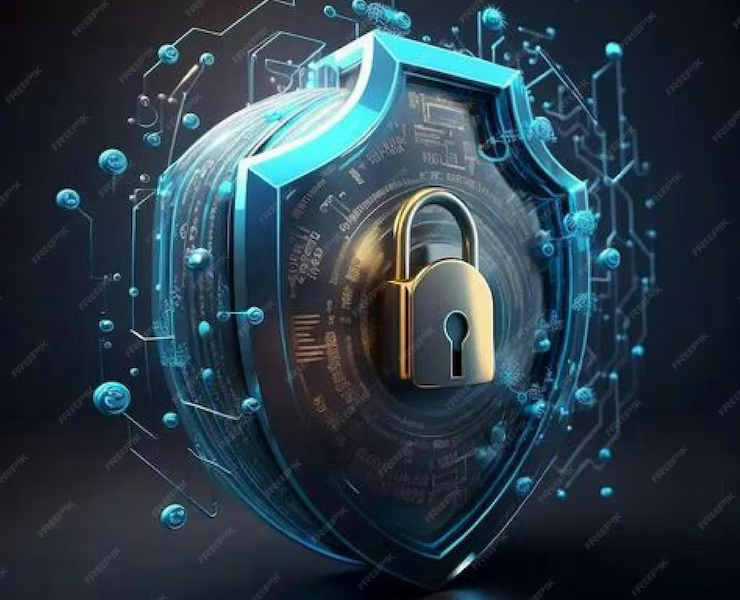Table of Contents
Understanding Cybersecurity
Cybersecurity encompasses the technologies, processes, and practices designed to defend computers, networks, and data from unauthorized access, damage, or theft. It involves multiple components, including:
- Network Security: Protects networked systems from unauthorized access and cyberattacks.
- Application Security: Involves implementing measures to protect software applications from threats throughout their lifecycle.
- Information Security: Focuses on safeguarding the integrity, confidentiality, and availability of data.
- Operational Security: Pertains to the policies and processes that determine how data is handled and protected.
- Disaster Recovery and Business Continuity: Ensures that organizations can respond to and recover from cybersecurity incidents effectively.
As remote work and online transactions become the norm, the need for effective cybersecurity measures has never been more critical.
Common Cyber Threats
Understanding the types of cyber threats that exist is essential for effective protection. Here are some of the most prevalent threats you might encounter:
1. Phishing Attacks
Phishing is a tactic where attackers send fraudulent emails or messages designed to deceive individuals into revealing personal information, such as passwords or financial details. These messages often masquerade as legitimate communications, making them difficult to identify.
2. Ransomware
Ransomware is malicious software that encrypts a user’s files, demanding payment to restore access. This type of attack can have devastating effects on both individuals and organizations, leading to significant financial and operational damage.
3. Malware
Malware refers to various forms of malicious software, including viruses, worms, Trojans, and spyware. These programs can disrupt computer operations, steal sensitive data, and gain unauthorized access to systems.
4. Data Breaches
Data breaches occur when sensitive information is accessed without authorization. This can result from weak passwords, outdated software, or inadequate security measures, leading to identity theft or financial loss.
5. Social Engineering
Social engineering exploits human psychology to manipulate individuals into divulging confidential information. Attackers may pose as trusted figures or use tactics that create a sense of urgency, pressuring victims to act quickly.
See Also Cybersecurity Course Online: Your Pathway to a Secure and Rewarding Career
Effective Cybersecurity Practices
To protect your digital life, consider implementing the following cybersecurity measures:
1. Create Strong Passwords
Develop unique and robust passwords for each of your online accounts. A strong password should include a combination of uppercase and lowercase letters, numbers, and special characters. Avoid using easily guessed information like birthdays or names. Using a password manager can help you generate and securely store complex passwords.
2. Activate Two-Factor Authentication (2FA)
Two-factor authentication adds an additional layer of security by requiring a second verification step, such as a code sent to your phone, along with your password. This greatly reduces the likelihood of unauthorized account access.
3. Keep Software Updated
Regular updates to your operating system, applications, and antivirus software are essential for protecting against vulnerabilities. Updates often include security patches that address known issues, so staying current is crucial.
4. Be Cautious with Emails and Links
Always scrutinize unsolicited emails, particularly those requesting personal information or urging immediate action. Hover over links to verify their authenticity before clicking, and avoid downloading attachments from unfamiliar sources.
5. Secure Your Wi-Fi Network
Protect your home Wi-Fi network by changing the default password, using encryption (WPA3 is ideal), and disabling guest access if it’s not needed. Regularly monitor connected devices to detect any unauthorized access.
6. Back Up Your Data Regularly
Consistent data backups are essential to prevent loss due to cyber incidents or hardware failures. Utilize both local backups (like external hard drives) and cloud storage to ensure data redundancy.
7. Educate Yourself and Others
Staying informed about emerging cybersecurity threats and best practices is vital. Share this knowledge with family, friends, and coworkers to foster a safer digital environment for everyone.
See Also Understanding Cybersecurity: Key Concepts and Tools for Enhanced Protection
The Importance of Cybersecurity Training
As cyber threats continue to evolve, the need for effective cybersecurity training becomes increasingly apparent. Organizations must prioritize training programs that equip employees with the skills necessary to recognize and respond to cyber threats effectively.
A fantastic opportunity for individuals looking to enhance their cybersecurity knowledge is the ThriveDX Cybersecurity Impact Bootcamp, powered by ThriveDX and Wentworth College. This immersive program offers:
- Hands-On Learning: Participants engage in practical exercises that mimic real-world cybersecurity challenges, allowing them to apply their knowledge in a controlled environment.
- Expert Instruction: The bootcamp is led by industry professionals with extensive experience, offering valuable insights and guidance.
- Career Advancement: Graduates gain the skills and certifications needed to pursue a career in cybersecurity, opening doors to numerous opportunities in this expanding field.
- Networking Opportunities: Participants connect with peers and industry professionals, broadening their professional networks and job prospects.
Why Choose ThriveDX Cybersecurity Impact Bootcamp?
- Comprehensive Curriculum: The bootcamp covers an array of topics, including threat detection, incident response, network security, and risk management.
- Flexible Learning Options: With both in-person and online formats, the bootcamp accommodates various learning preferences and schedules.
- Career Support: ThriveDX offers career services and job placement assistance to help graduates find positions in cybersecurity.
- Industry-Relevant Certifications: Participants can earn recognized certifications that enhance their employability and credibility in the cybersecurity sector.
Conclusion
In a world increasingly defined by digital interactions, cybersecurity is more than just an IT concern; it’s an essential part of daily life. By understanding common cyber threats and implementing effective protective measures, you can significantly enhance your online security.
Investing in cybersecurity education, such as through the ThriveDX Cybersecurity Impact Bootcamp, equips you with the knowledge and skills needed to navigate the complexities of the digital landscape confidently. As technology continues to evolve, staying informed and proactive about cybersecurity is your best defense against potential threats. Take charge of your digital safety today and ensure a more secure tomorrow.




